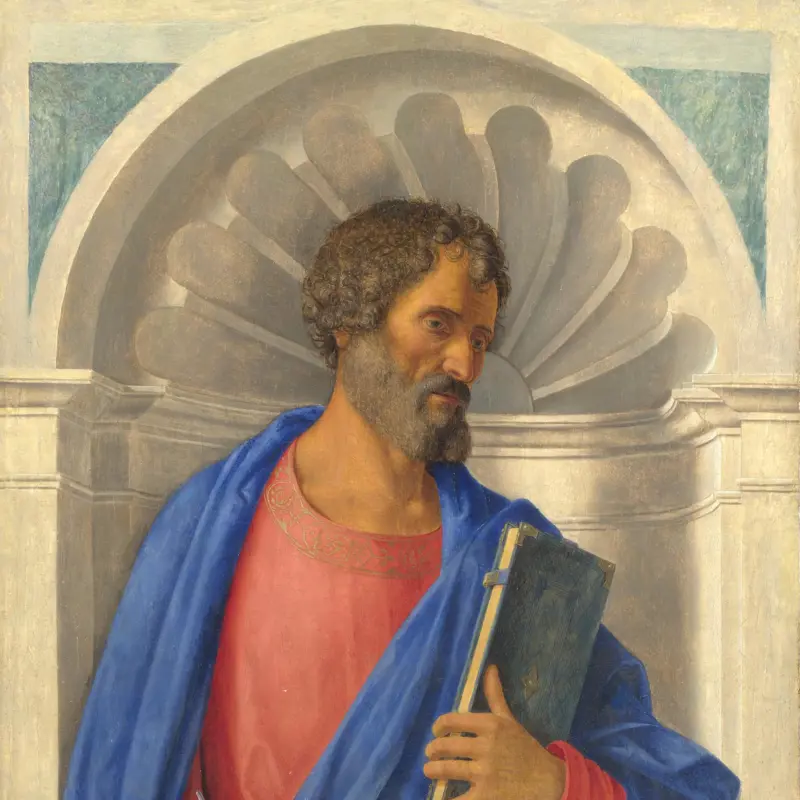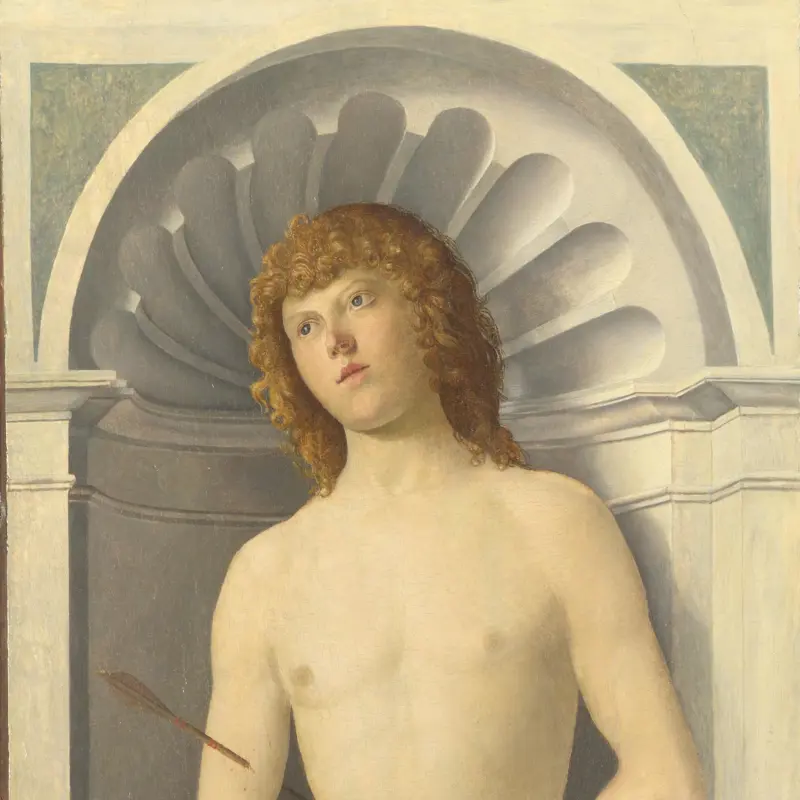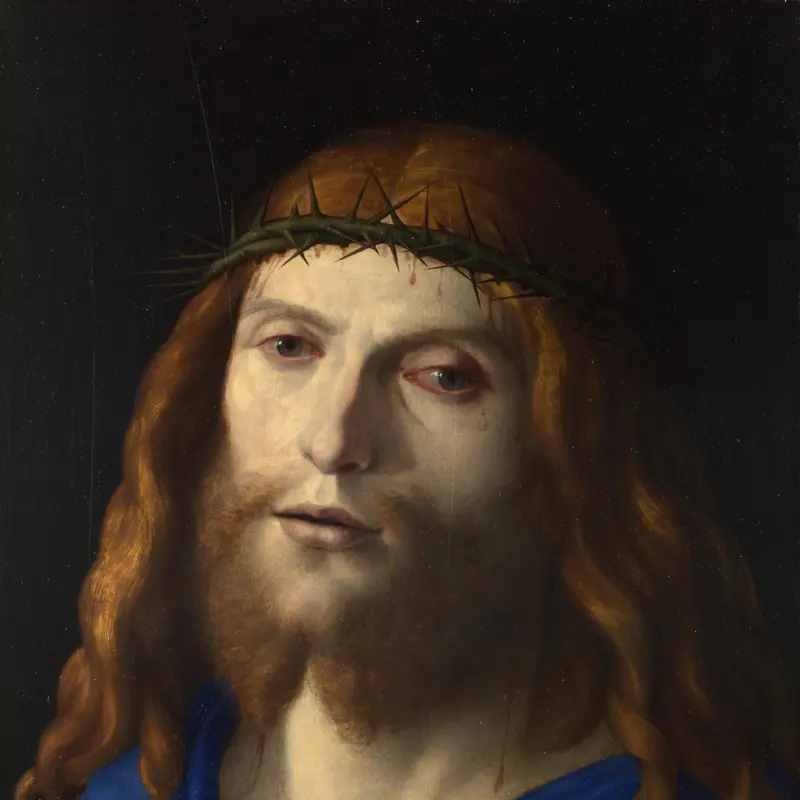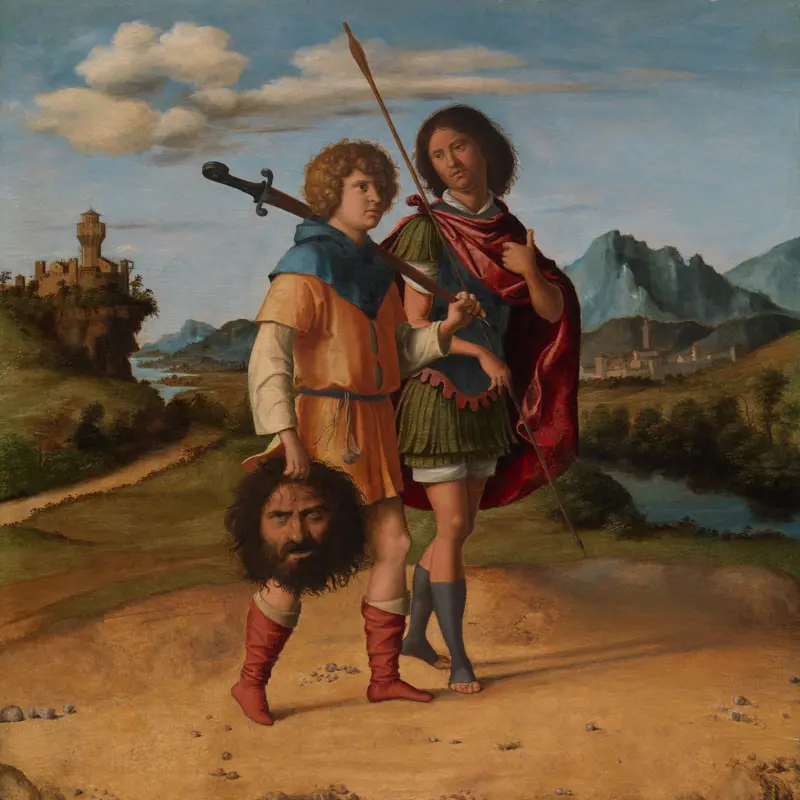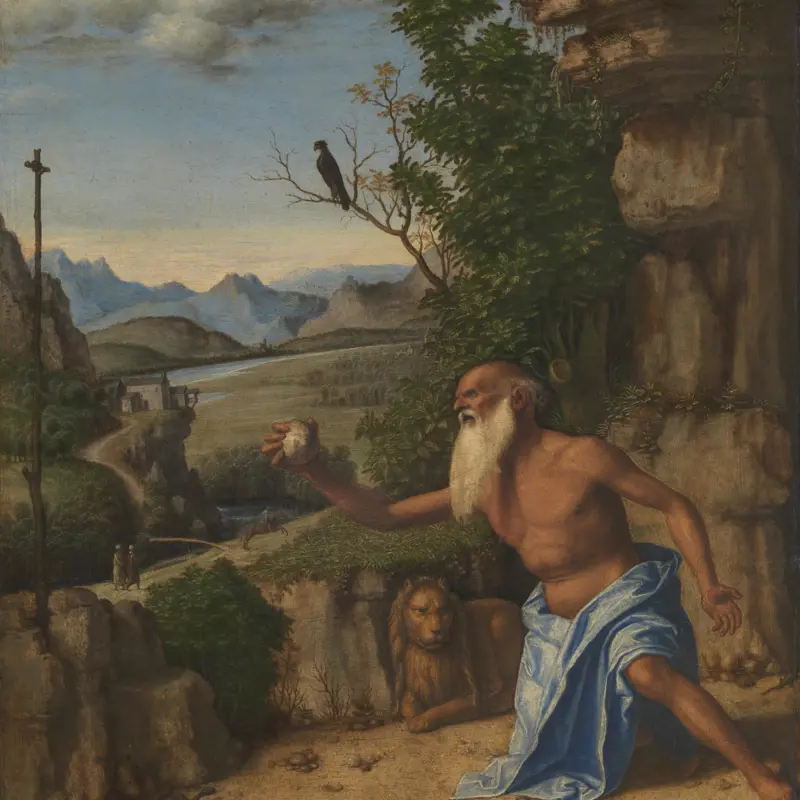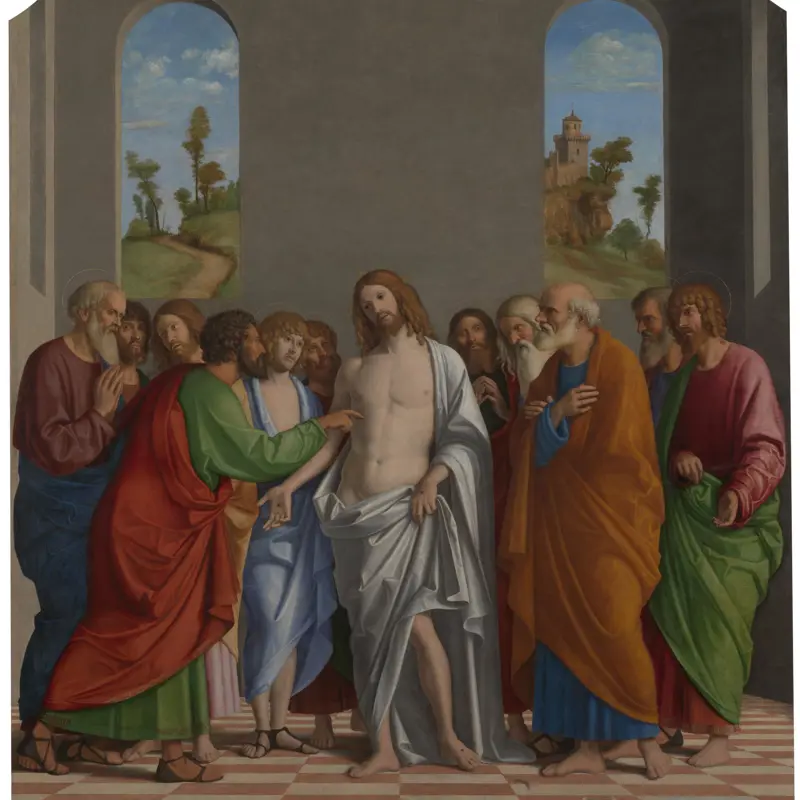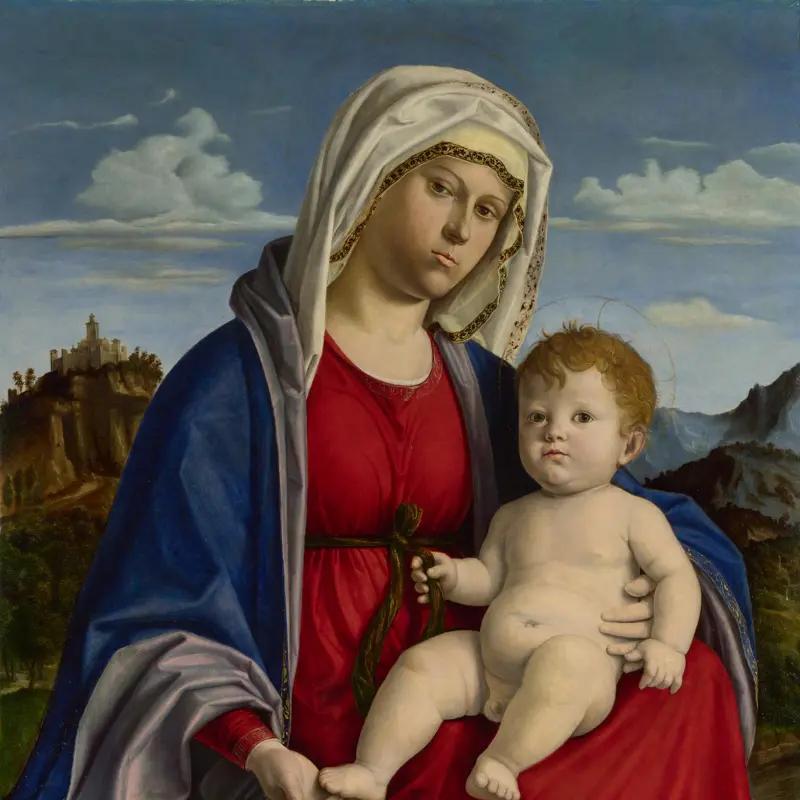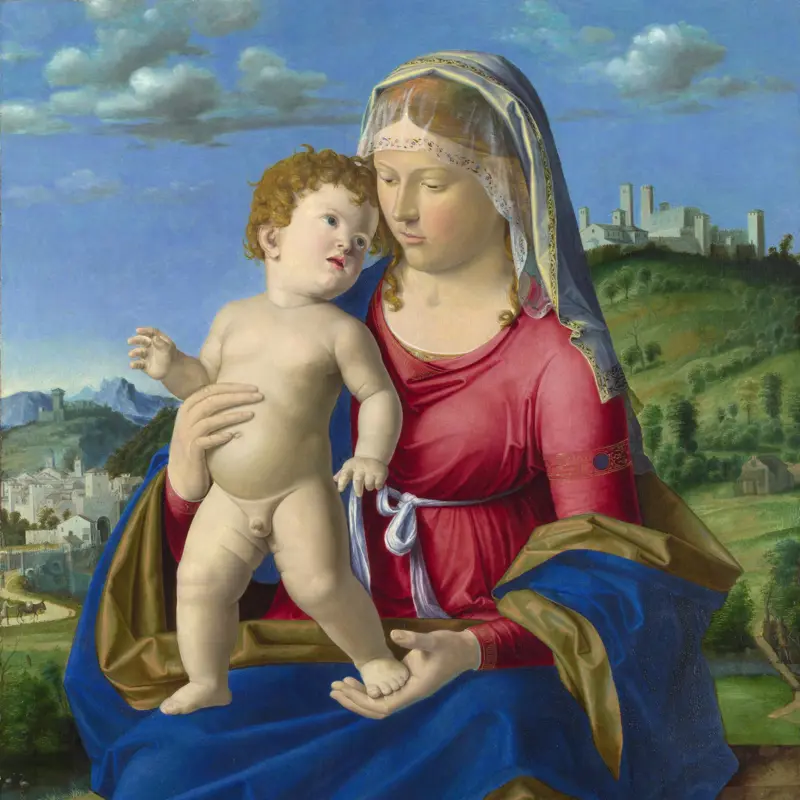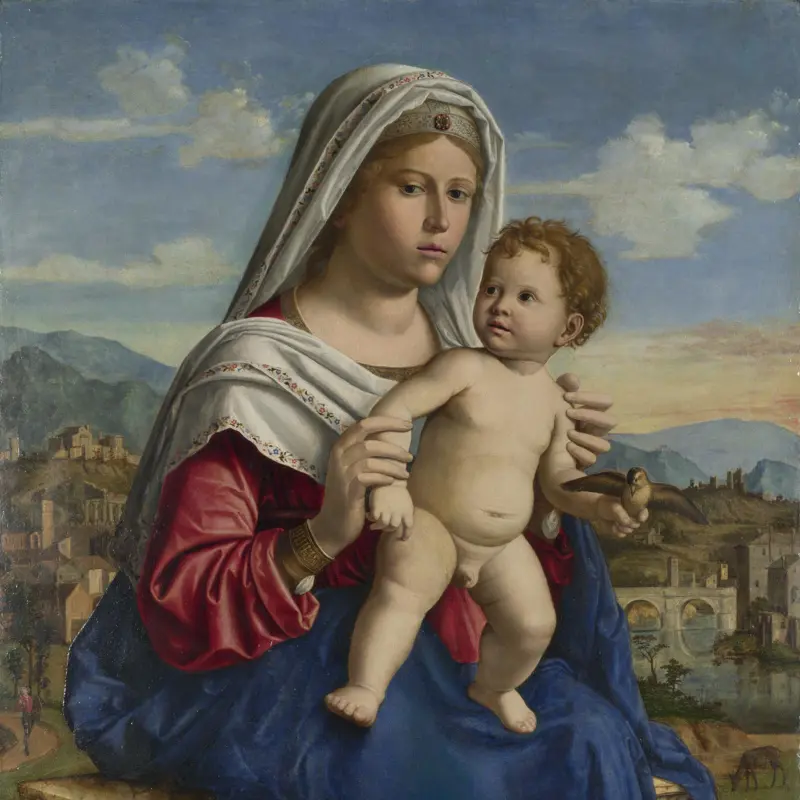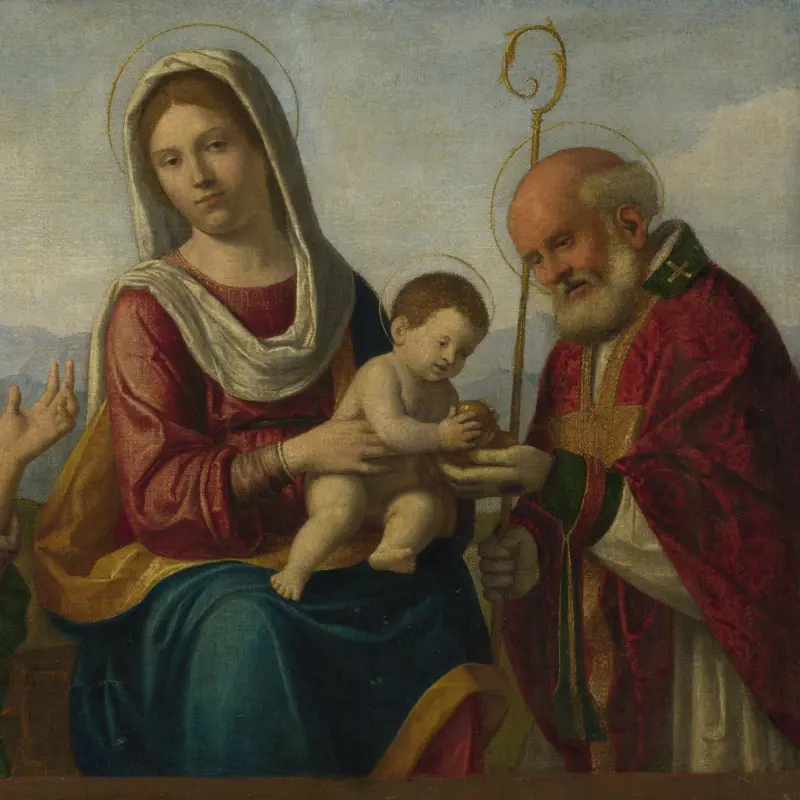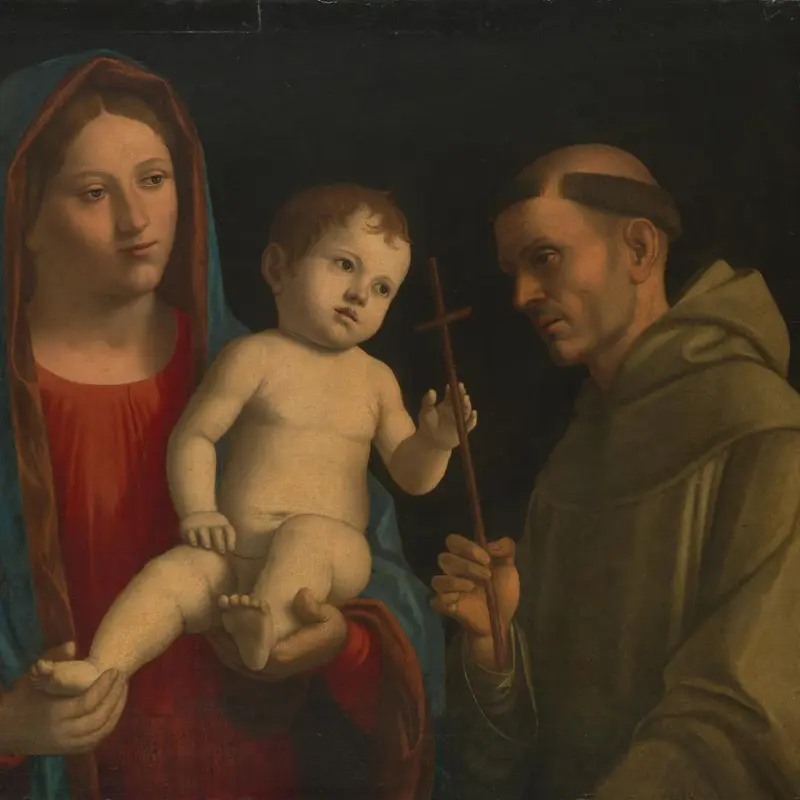Giovanni Battista Cima da Conegliano, 'Saint Sebastian', about 1500
About the work
Overview
A pale young man stands in a stone niche, almost naked and seemingly unaware of the arrows in his arm and leg. This is Saint Sebastian, a Roman soldier who secretly converted to Christianity. When his faith was discovered, he was shot with arrows but miraculously survived.
Here, the saint seems more like a classical statue than a living figure. Cima must have been aware of Tullio Lombardo’s famous Adam (made around 1490–5), the first nude marble statue sculpted since antiquity; he has replicated the figure’s stance, curly hair and slightly vacant expression almost precisely.
This painting is one of two in the National Gallery’s collection which must have formed the side panels of a multi-panelled altarpiece, but we are not sure when they were made, or where for.
Key facts
Details
- Full title
- Saint Sebastian
- Artist dates
- About 1459/60 - about 1517/18
- Part of the series
- Two Panels from the S. Maria dei Crociferi Altarpiece
- Date made
- About 1500
- Medium and support
- Oil on wood
- Dimensions
- 103.2 × 40.6 cm
- Acquisition credit
- Mond Bequest, 1924; entered the Collection in 1938
- Inventory number
- NG4946
- Location
- Not on display
- Collection
- Main Collection
- Previous owners
- Frame
- 20th-century Replica Frame
Provenance
Additional information
Text extracted from the ‘Provenance’ section of the catalogue entry in Martin Davies, ‘National Gallery Catalogues: The Earlier Italian Schools’, London 1986; for further information, see the full catalogue entry.
Bibliography
-
1951Davies, Martin, National Gallery Catalogues: The Earlier Italian Schools, London 1951
-
1986Davies, Martin, National Gallery Catalogues: The Earlier Italian Schools, revised edn, London 1986
-
2001
C. Baker and T. Henry, The National Gallery: Complete Illustrated Catalogue, London 2001
About this record
If you know more about this work or have spotted an error, please contact us. Please note that exhibition histories are listed from 2009 onwards. Bibliographies may not be complete; more comprehensive information is available in the National Gallery Library.
Images
About the series: Two Panels from the S. Maria dei Crociferi Altarpiece
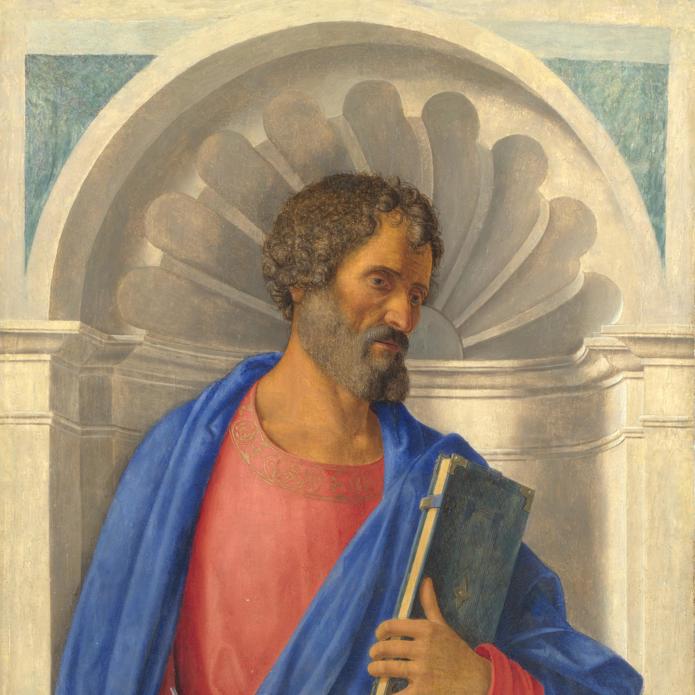
Overview
Two monumental saints – Mark and Sebastian – stand in niches topped with shell-like arches. They must originally have formed the outer wings of a multi-panelled altarpiece. We don't know where they originally came from, but in the seventeenth century two panels were recorded in the church of the Crociferi, Venice, where they flanked an image of the Annunciation by Cima (State Hermitage Museum, St Petersburg). They do not seem to have belonged together, however: the Annunciation is taller, quite different in composition and painted on cloth rather than wood.
It is possible that they came from an altarpiece which was part sculpted and part painted, like the one Cima da Conegliano painted for the parish church of Olera, near Bergamo. Its painted panels show standing saints, and they flank a carved and coloured statue of Saint Bartholomew in a shell-shaped niche.

